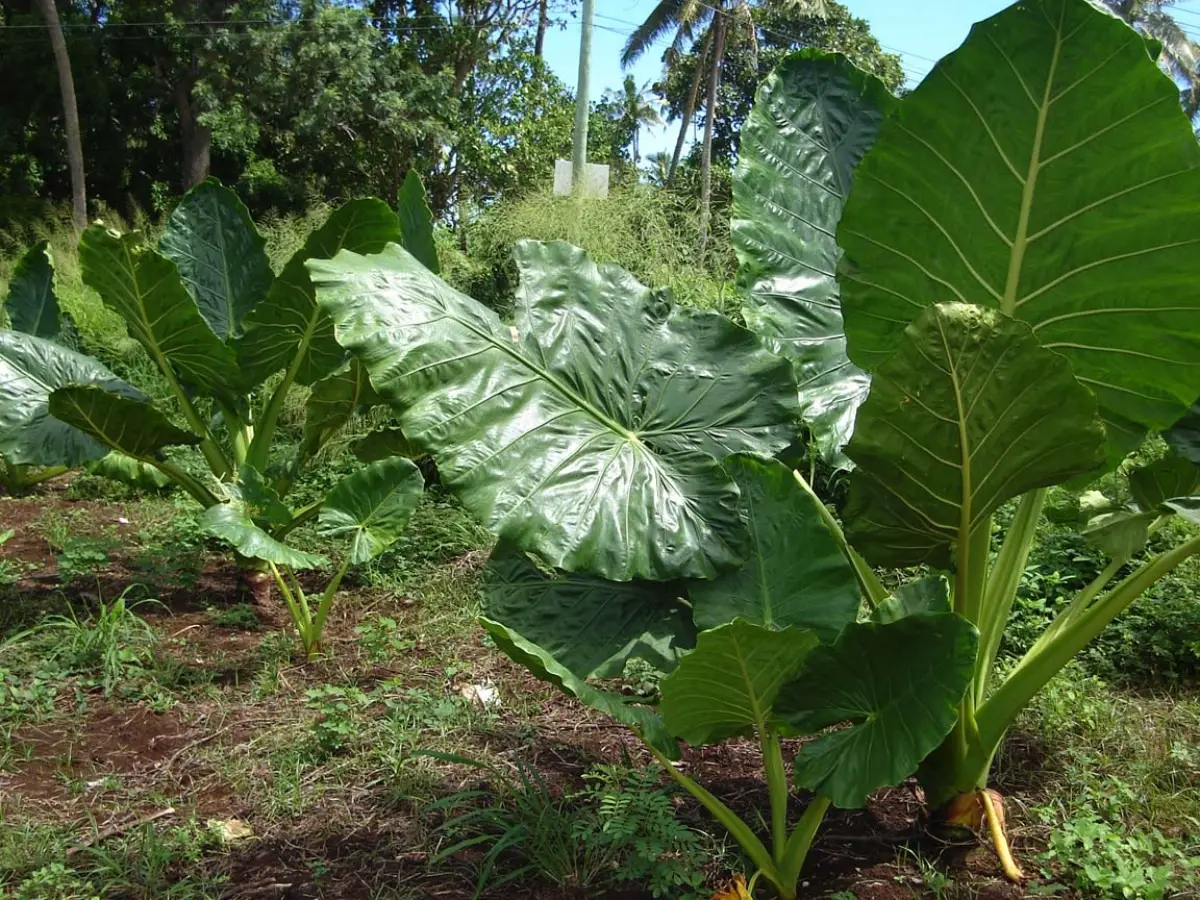


Image – Wikimedia Commons / Tauʻolunga
The marquise plant, also known by the names of alocasia or elephant ear, is very pretty. It has very large undivided leaves, which sprout from a very long stem (petiole), thus taking up quite a bit of space. In addition, there are different varieties and a few other cultivars have been obtained, a number that increases if we include other species of alocasia and we do not keep only A. macrorrhizos, which is, let’s say, »the true elephant ear ».
But there is something very important to know about the species of this genus, and that is what we are going to talk about in this article. Perhaps you have ever wondered if the marquise plant is poisonous, and if you haven’t yet, don’t worry. Let’s see if it is or not, and how it has to be handled so that problems do not arise.
It is poisonous?
Image – Flickr/Jnzl’s Photos
All varieties of Alocasia contain oxalic acid, especially in the leaves and stems (petioles). This substance is colorless, as well as toxic if in contact with it. In fact, it can cause redness, itching, and even more serious damage like ulcers or burns.
If ingested, you may have any of these symptoms: abdominal pain, throat swelling (with consequent shortness of breath), vomiting, convulsions, excessive salivation, loss of vision (if it has come into contact with the eyes), drastic drop in blood pressure, and/or collapse.
Therefore, the marquise plant yes it is poisonous. Now, does this mean that it should be banned? Absolutely.
What we can do is take into account a series of tips when handling and caring for it. You have to think that there are many plants that contain toxic substances both in nature and in gardens and homes. It is better to know them, learn to identify them, and thus decide whether to acquire them or not.
In the event that you have small children or pets, we recommend keeping the marquise plant in a place inaccessible to them.
.How to handle the marquise plant?
Alocasia is a plant that actually it is not necessary to handle in a special way unless it has to be pruned or when it is going to be transplanted. I mean, if what we’re going to do is water it, we won’t have to take any protective measures. Even if we are going to pay it, especially if we use fertilizers (what we know as chemical fertilizers), we will put on gloves but not for the plant, but for the product that we are going to apply to it, since this does come into contact with the skin and we have it sensitive or with a wound, we may feel discomfort.
For all this, and in short, we will put on rubber gloves -like kitchen ones-, in these cases:
- When we have to cut a leaf that is dry.
- If we are going to change the pot or plant in the garden.
- And if we have to carry out any treatment or fertilizer.
Where to place the marquise plant?
We know that it is poisonous, but we have still decided to acquire one. Where should I put it? Well, our protagonist needs a lot, a lot of light, so much so that If you have it outside, it could give you a few hours of direct sunlight without a problem. as long as it was early in the morning or late in the afternoon.
Therefore, when If you choose to grow it indoors, it must be placed in a room with windows facing eastWell, that’s where the sun rises.
Now, not only should the clarity of the place where it is to be placed be taken into account, but also the humidity and whether or not there are drafts. And we are talking about a plant that lives in humid tropical forests, so it is important to check if the humidity exceeds 50% in the place where it is going to be, since if it does not do it then the leaves will have to be sprayed with water every day.
In the event that you are going to have it inside the house, you must make sure that you put it in an area where there is no fan or air conditioning. These devices, by generating air currents, cause the humidity to drop, and by doing so, the tips of the leaves dry out and the plant looks bad.
Another important detail to keep in mind is the following: you have to keep it a little away from the wall. If the leaves rub against it, they will also spoil. For this reason, it should not be placed in a narrow passageway, such as corridors, for example, because even if it is not “attached to the wall”, if we pass by it a lot, at the end we will also see that the tips dry out or even leaves break.
So, we trust that from now on you can enjoy your marquise plant more, even if it is poisonous.
